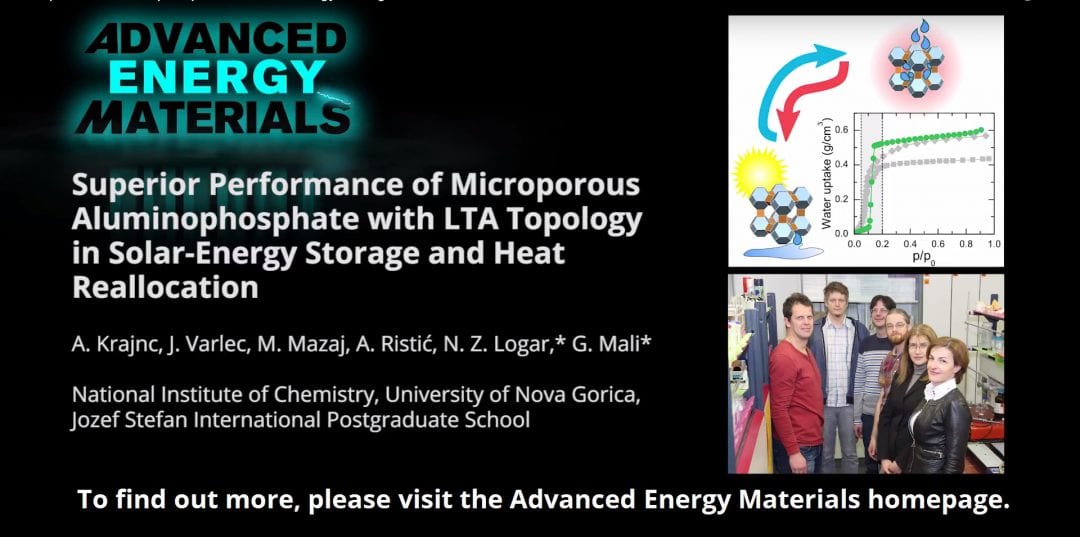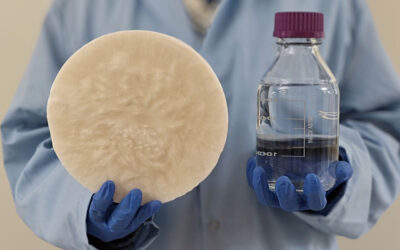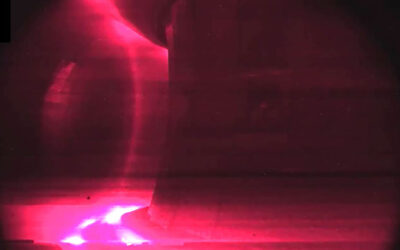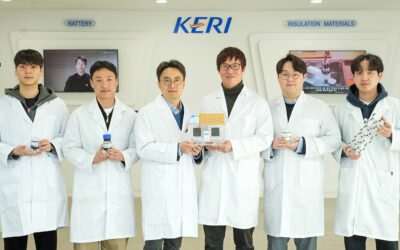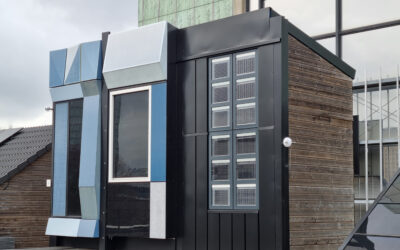Everyday around the world, a vast amount of energy is used to power heating and cooling systems in industry and your home. Sustainable solutions are required to ensure that this energy is renewable. Microporous aluminophosphates are a promising solution because they can use solar energy or waste heat for adsorption-driven heat-transformation.
In Advanced Energy Materials, Professor Mali and Professor Logar from the National Institute of Chemistry and University of Nova Gorica, Slovenia, and co-workers, have investigated one potential candidate in this class of materials: aluminophosphate with Linde Type A (LTA) topology (ALPO-LTA).
When the porous aluminophosphate-LTA framework is dried using energy from renewable sources, its structure becomes activated. The material can be stored in the obtained state for a very long time without thermal losses. At a later stage, when water is returned into aluminophosphate-LTA in a controllable way, upon the adsorption of water molecules into its pores the stored energy is released as sensible heat.
X-ray diffraction and proton and aluminum nuclear magnetic resonance spectroscopy showed that hydration of aluminophosphate-LTA follows a one-step mechanism of pore-to-pore hydration as opposed to gradual filling of multiple pores observed in many other microporous materials. Density functional theory calculations performed for a similar aluminophosphate, aluminophosphate-34, revealed that the sudden uptake of water is driven by framework deformation, whereby coordination of water molecules to aluminum atoms leads to a localized change in aluminum coordination from four- to six-fold, making the material more hydrophilic and triggering a sudden uptake of water molecules and formation of water clusters inside the pores.
Aluminophosphate-LTA exhibits superior energy-storage capability compared to the most promising porous materials in this field, including aluminophosphate-34 and metal-organic framework materials. It has the largest cooling power and remarkable thermal stability up to 900 °C. It also retains structural integrity in the calcined framework after repeated dehydration/rehydration cycling, and has the largest known water uptake in a narrow pressure range. Importantly, it attains 90% capacity at only 60 °C, making it suitable for long-term solar-heat storage—even in regions without extended periods of intense solar irradiation.
To find out more, please visit the Advanced Energy Materials homepage.

